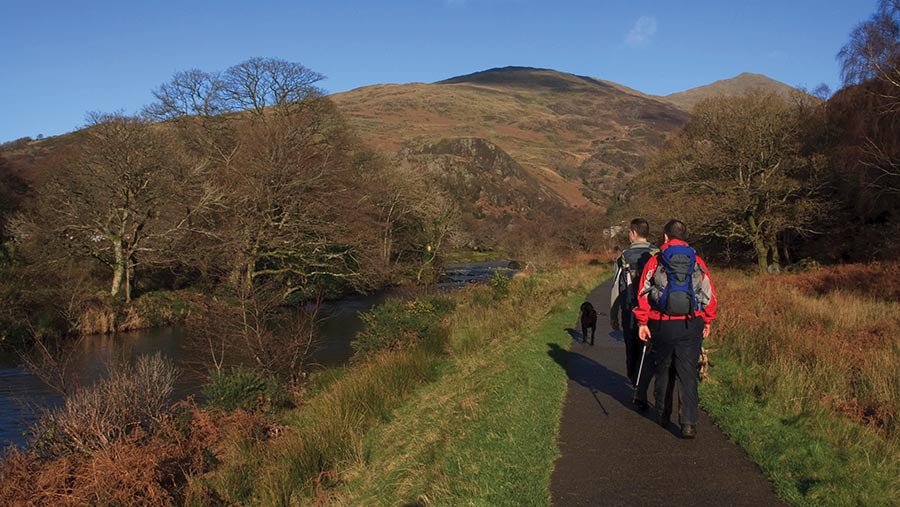Business Clinic: Can we fence public footpath near river?
 © Gail Johnson/Adobe Stock
© Gail Johnson/Adobe Stock Whether it’s a legal, tax, insurance, management or land issue, Farmers Weekly’s Business Clinic experts can help.
Richie Rees, associate in Thrings’ agriculture team, sets out how to address a footpath issue.
See also: Business Clinic: How to decide investment priority for daughters’ enterprises
Q. We recently bought an additional piece of land adjacent to a river. It has a public footpath running about 4m from the river.
Walkers and their dogs stray from the path, in some areas to access the river, and this is causing erosion on the bank.
Are we allowed to fence both sides of the path to prevent walkers straying and prevent further erosion, as well as to give us privacy to enjoy our land?
A. This situation raises a familiar practical issue for landowners willing to accommodate public rights of way, but who also want to protect their own rights of use and privacy.
At the basic legal level, the public footpath must remain open at all times, but the private land either side may also be protected and the public has no basis to insist on being able to go beyond the limits of the official route and width of the footpath.
It could be argued that any walkers who stray off the official route are trespassing.
While the landowners are unlikely to pursue a potential legal claim, they can generally seek to enforce their private rights through boundaries such as a hedge or fence, which might have the consequence of preventing any further straying.
Check footpath requirements
On a practical level, the footpath will need to be a specific width across when measured from inside each fence line.
That width will either be recorded on the Definitive Map and Statement or will otherwise be a minimum set by regulation or required by the specific local authority where both sides are enclosed.
The sensible approach would be to contact the relevant local authority and seek clarity on what minimum width would be required for this particular footpath to be enclosed on both sides.
The landowners should also be aware of the risks caused by walkers and dogs leaving the footpath.
If simply randomly straying from the footpath, there may be no issue; however, if there is some consistency and repetition as to where the public leave the path, this might give rise to a potential claim for an expansion of the public right of way over time, or even a new additional route alongside the existing one.
This risk appears minimal on the current description, but the landowner may wish to proactively remove that risk by lodging a section 31(6) Highways Act 1980 deposit to declare the limitations of the public rights of way over the land.
Lastly, the ongoing damage to the river bank and/or risk of potential harm being suffered by the public in relation to that erosion may both expose the landowners to legal challenges.
To minimise this risk, the landowners should ensure clear communication to the public on the limits of the official footpath, whether or not a boundary is installed.
These potential issues should also assist in any negotiation with the local authorities about the need for and location of the desired fence lines.
Do you have a question for the panel?
Outline your legal, tax, finance, insurance or farm management question in no more than 350 words and Farmers Weekly will put it to a member of the panel. Please give as much information as possible.
Email your question to FW-Businessclinic@markallengroup.com using the subject line “Business Clinic”.
